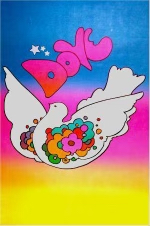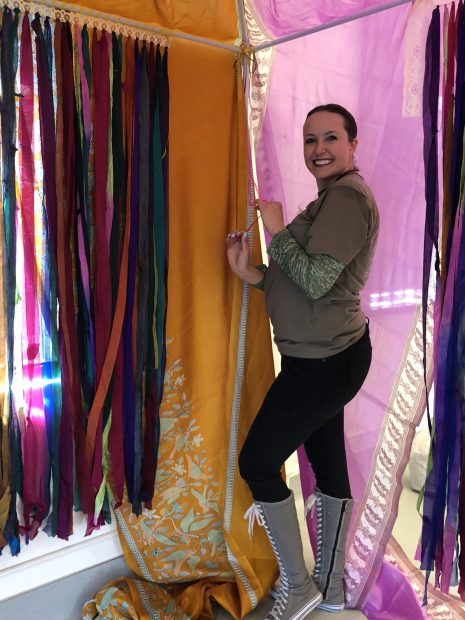
Spoiler Alert: Belle successfully rescues Sweetie
Guest Post by Belle Cifu
In early August of 2022, my partner Beau and I moved to the Bay Area, specifically Oakland, for his work. We arrived to a completely empty apartment, filling out a small section of the living room with just the few boxes of clothes and knick knacks we could fit in the car on our cross-country journey from Virginia. We arrived in Oakland a week before Beau began work and set to work filling the apartment with at least the basics– a mattress, a desk and chair for the home office, some pots, pans, plates, and bowls, and most importantly, tons of succulents. When Beau left for his first day of non-remote work and the realization hit that I had a nearly empty calendar in front of me with no real plan in place, I settled in the only chair in our apartment (a Walmart camping chair, as our office chair was on backorder) with my laptop to find something meaningful to fill my days.
My first step was to search online for job postings and volunteer opportunities in animal rescue, as I’ve been volunteering for animal sanctuaries back in Virginia for the last few years and wanted to continue my animal rescue work here in California. I found Palomacy through one of these Google searches and immediately filled out their volunteer form. Though I’ve worked with rescue chickens, turkeys, ducks, and parrots, I’d never yet had the opportunity to meet a pigeon beyond the most curious & daring of park pigeons. Plus, from everything I was reading on their website and in the Palomacy Facebook Group, Palomacy seemed like a fantastic organization. I was ecstatic to have found them so quickly after arriving in the East Bay and hoped I’d hear back about volunteer opportunities in the next few weeks. In the meantime, I continued my search for A) a chair with lumbar support from which to conduct my search and B) a job in animal rescue.
I didn’t have to wait long– the day after I submitted my application to volunteer, Elizabeth called me on behalf of Palomacy to discuss what I could do for the organization and, amazingly, what Palomacy could do for me. We had a long conversation about the joys of caring for pigeons and doves, as well as our observations and insights from working in animal rescue. As there are so many great ways to help Palomacy– Alameda aviary clean up, Facebook & tech support, fostering/adopting, and aviary building to name a few– Elizabeth asked what specifically I’d like to do. Seeing my nearly empty calendar in front of me and craving some time spent with rescued animals, I told Elizabeth, “Sign me up for everything, I’m in!”
I didn’t have to wait long for my volunteering to begin (noticing a pattern yet?). The day after our call, I was feverishly rearranging the 3 pieces of furniture in our living room and contemplating the downsides of minimalism when I received a text from Elizabeth: “Remember how we talked about short-term emergency fostering? We have a single pigeon who needs a safe place to be for awhile…” I quickly decided to put off my furniture rearranging and instead arranged to pick up a crate, a cage, and most importantly, the pigeon later that week.
The next day, while on the way to pick up a borrowed crate and cage generously offered by Kay Martin and Jill McMurchy, I called the pigeon’s people to get a better understanding of the situation. Elizabeth had put me in contact with the family who reached out to Palomacy about their pet pigeon who was living loose in their garage. Sweetie had been the pet of their family member, but he’d somehow escaped his cage during renovations on the house in the spring of 2022. Now August, months had gone by without them being able to catch him and no other rescue organizations had been able to help. Though I’d never caught a pigeon before, I’ve helped with catching and transporting plenty of other birds and based off my phone conversations with the family, I felt reasonably confident that we’d be able to work together within the confines of the garage to safely secure Sweetie in the crate. That was, until they dropped the bomb that the garage Sweetie was living in was not quite the safe, if not a little inconvenient, pigeon playground I thought it was. It seems that, at some point in the renovations, the garage door had been removed, leaving a 2-car sized entrance for feral cats, coyotes, racoons, and any other creature who might see Sweetie as a tasty snack. Elizabeth immediately warned me that this rescue was now of IMMEDIATE urgency, so I arranged to head out to Concord the very next day.
Now a little less confident in my pigeon-catching abilities but even more determined to get Sweetie to safety, I set out for their house in a Concord neighborhood. I met Sweetie’s people in the driveway and saw what appeared to be a small chicken strutting around on the garage floor, pecking at seeds strewn about between large bowls of dry cat food.
“That’s where Sweetie normally hangs out, until we approach him… he always flies into the rafters when we or the cats get too close.” And, as if on cue, the small chicken flew up into the rafters of the garage, where he coo’d and revealed himself to be the very large and proud King pigeon I was there to rescue.
![]()
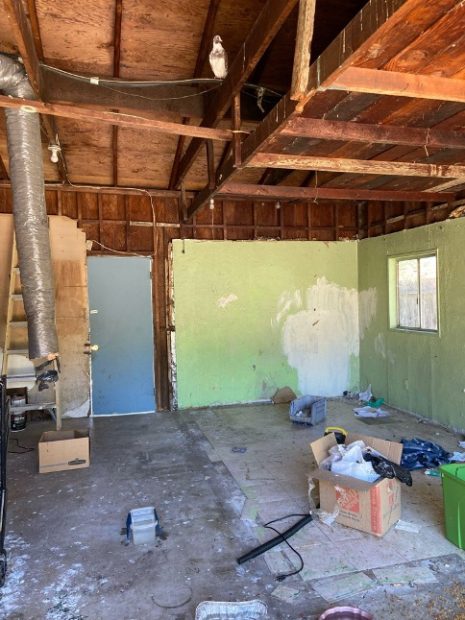
All 706 grams of Sweetie were immediately wary of me. He remained up in the rafters while I set up the dog kennel Kay had converted into a humane, one-way trap. With the help of his people, I moved the cat food out of the way, swept up all the remaining seed (including his secret stashes on the shelves) and settled in to wait him out. This was my first time hanging out with a pigeon, so I wasn’t in any hurry. I could have sat there for hours (… and eventually did!) watching him strut about and strategize.
Sweetie’s a pretty big bird and had gotten used to 24/7 access to bird seed. He was clearly all-too-aware that we’d swept up his all-you-can-eat buffet and replaced it with a portion-controlled pile at the back of the large, imposing kennel. After about 30 minutes of scheming and cooing (Sweetie’s an external processor), he jumped down to the floor of the garage. First, he made the rounds to be sure we hadn’t missed any seeds… he got a bit confused by a few forgotten pieces of kibble, but otherwise found nothing. Though frustrated at our thoroughness, Sweetie wasn’t yet hungry enough to abandon caution. He strutted in circles, inching closer and closer to the crate, then suddenly flew back up to the rafters to decompress and do a little more processing of the situation. A few minutes later, he was back on the garage floor, caddy corner to where he landed before, scoping out the scene from a different vantage point. For the next hour and a half, Sweetie repeated this strategy, his eyes alternating between the pile of seed in the kennel and the potential predator a yard or two away, who by this point had lost feeling in their feet and deeply regretted choosing a deep squat for their stakeout position. Beyond the impending threat of my legs’ blood circulation being cut off, we unfortunately had another time constraint on this rescue. Sweetie’s people needed us to leave the property by 4:00pm and it was already a quarter ‘til. Disappointed that we hadn’t been successful on our first day and a little bewildered by my time consuming and seemingly ineffective approach, they suggested that we throw a bath towel on him the next time he landed on the garage floor, as a last-ditch effort. But I wasn’t ready to throw in the towel just yet…
Instead, I asked them to stand around the corner with the towel ready in hand and await my signal. The last time Sweetie had ventured down to the garage floor, he had made a complete circle around the kennel and even stood just one foot away from my aching, crouched body. I knew that he was testing me to see if I’d pounce on him, as I’m sure the cats had attempted many times, as well as his family in earlier rescue efforts. Satisfied by my lack of movement (due in equal measure to my knowledge that he was too fast for me to catch that way and the nearly complete loss of feeling in my feet), Sweetie had walked right past me before retreating to the rafters. For reasons that defy logic, I had a hunch that the next time Sweetie flew down to the floor, he’d mean business. With my eye on the clock (3:53 and counting…), I quickly stretched my legs, double-checked the string was in the best position to swing the trap door closed when I pulled it, and sank back down into my squat.

Sweetie watched me move about down below, uncharacteristically silent, cocking his head as I settled back into stillness and he could refocus his eyes on the prize– the tempting pile of seeds. A few minutes later, Sweetie suddenly swooped down to the floor, just a few feet in front of the kennel door. He swiftly gobbled up the trail of seeds leading into the trap, then checked in with me once more before hopping onto the plastic kennel tray in the direction of his well-deserved prize. In seconds, Sweetie finally reached the seeds he’d been surveying for nearly three hours. At the same moment that Sweetie bent down for his first taste of victory, I pulled the string hard and called for towel reinforcements as the kennel door swung shut. With less than a minute left on the clock, I locked the door and Sweetie’s people covered the kennel with towels to help calm down the scared pigeon who was not quite used to confinement after enjoying months of uncaged freedom. We loaded him into the trunk of my car right at 4pm and celebrated our long-awaited victory. Then, Sweetie and I set off for my Oakland apartment, which was still empty beyond our boxes of knick knacks, the mattress still on the floor, our Walmart camping chair, somehow even more succulents, and one new essential piece of furniture– a tall bird cage, big enough for a loud, proud chicken-sized foster pigeon.
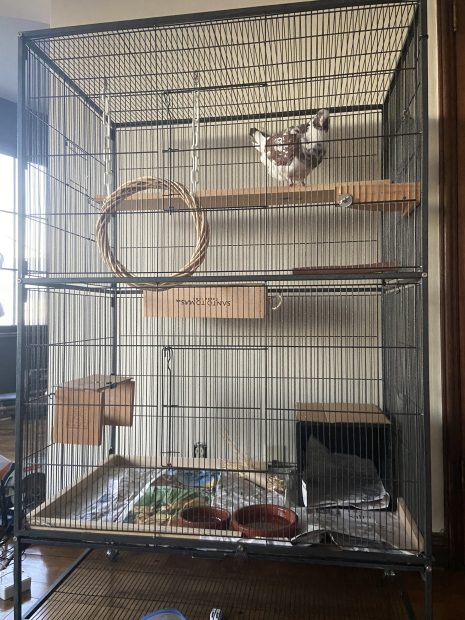
Belle brought Sweetie home to foster

Sweetie made himself right at home
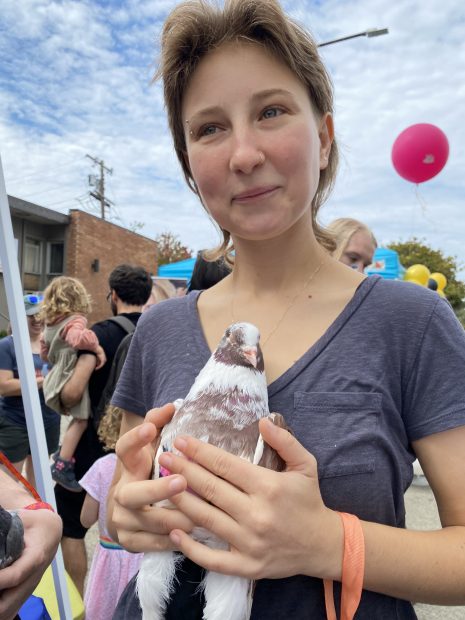
Belle & Sweetie worked their first outreach together

Sweetie admires himself visiting the Ploughshares aviary
Sweetie’s Story, Part Two coming soon!
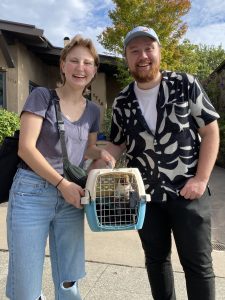
Belle, Beau & Sweetie
Belle Cifu Originally from Virginia, Belle has been working in animal rescue up & down the East Coast for many years. They have had the pleasure of rescuing & caring for all sorts of animals, from pot-bellied pigs on farm sanctuaries to sea turtles in a marine turtle hospital to Syrian hamsters rescued from a lab. Belle is currently working towards their MA in Visual Anthropology, Media, & Documentary Practices. They hope to someday contribute to the growing body of work on non-human animals within the field of anthropology. In the meantime, Belle has LOVED getting to know pigeons & doves as a volunteer for Palomacy and looks forward to many more high-flying pigeon adventures to come!

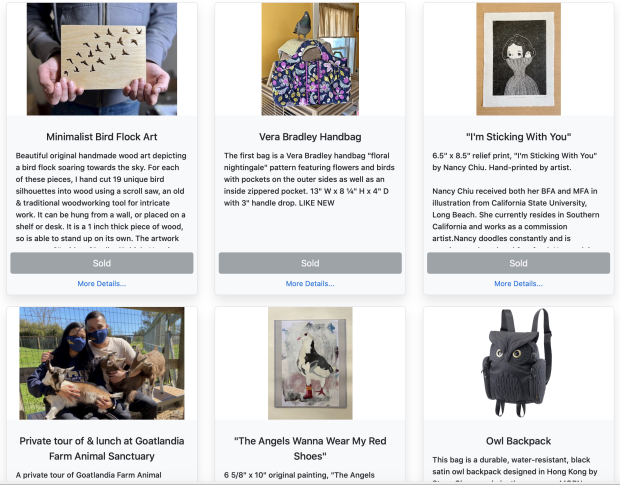






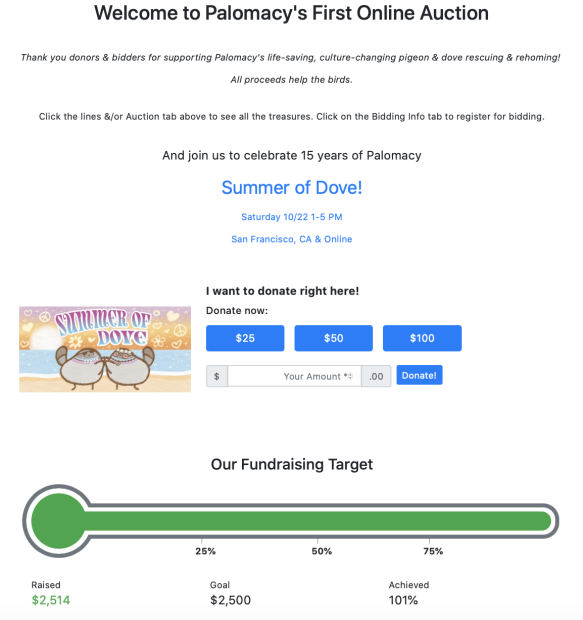








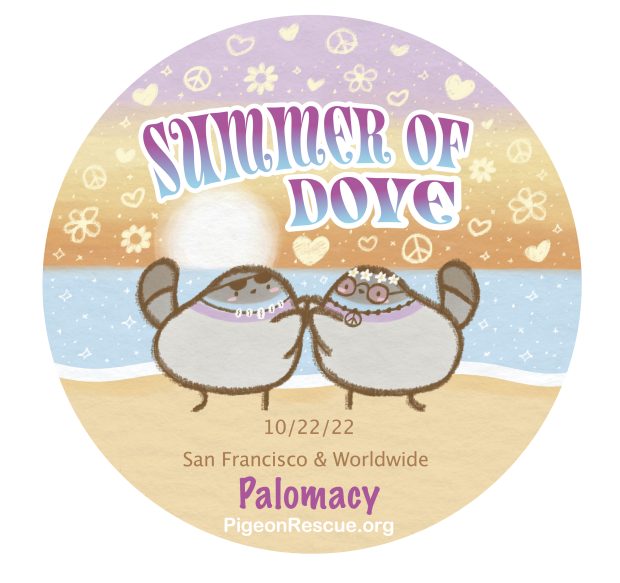


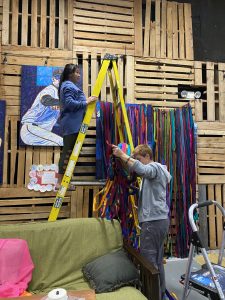














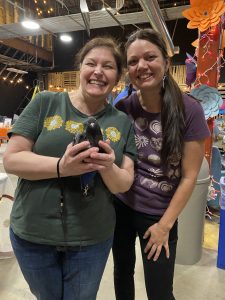





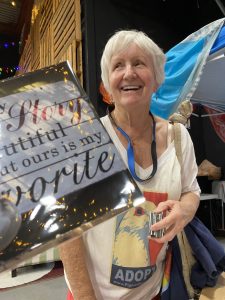















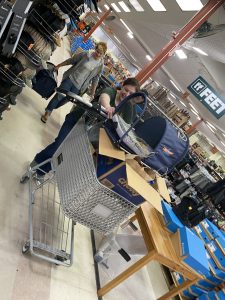
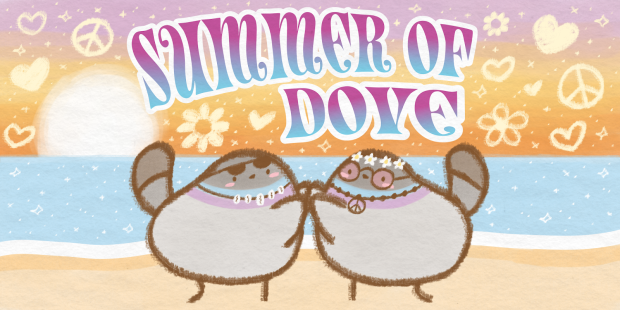
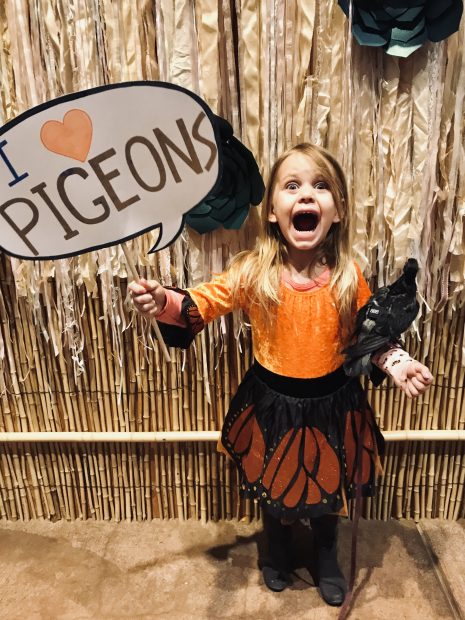



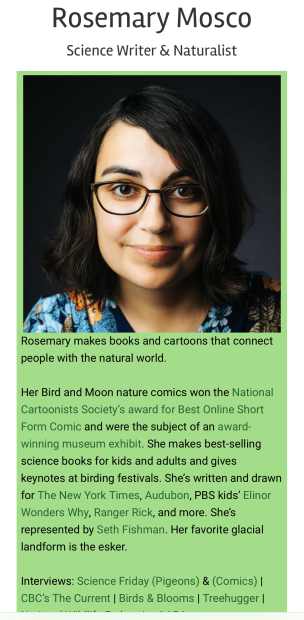

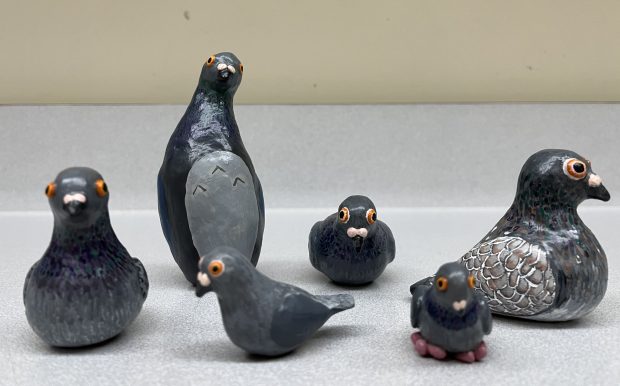










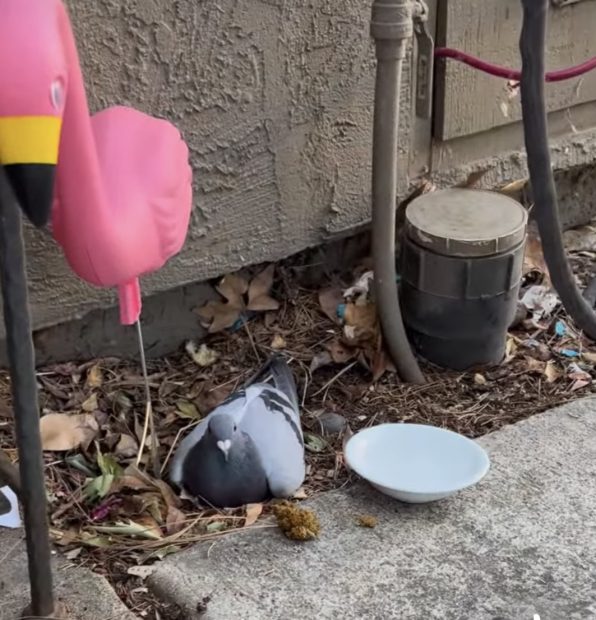


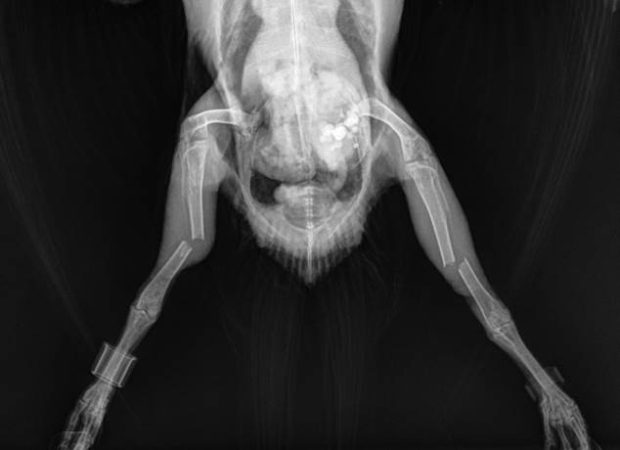

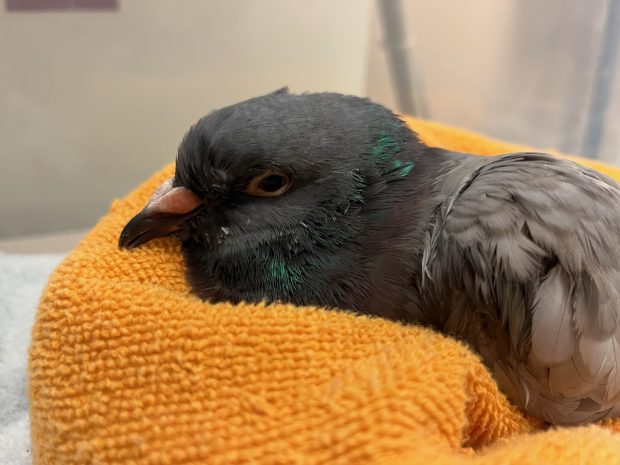
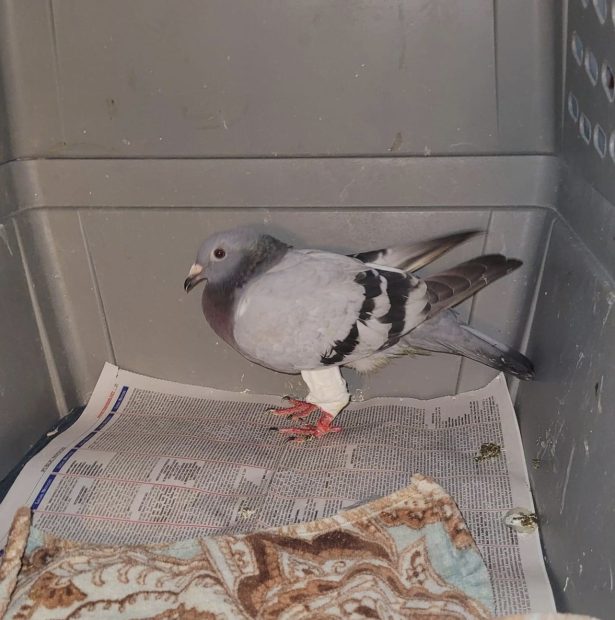


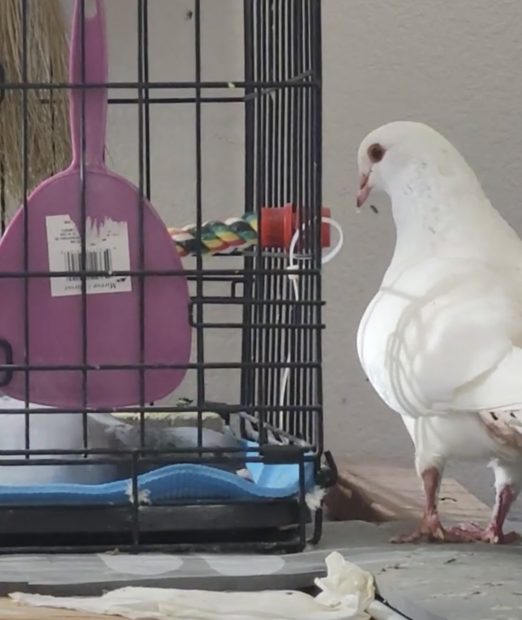




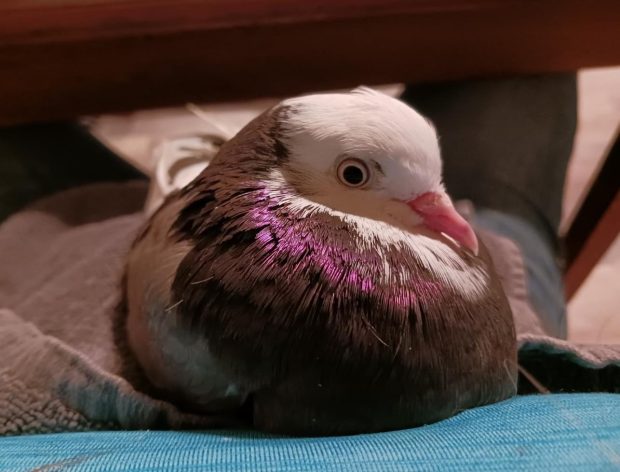



 Cynthia A. Harris (“Sindy”)
Cynthia A. Harris (“Sindy”)


